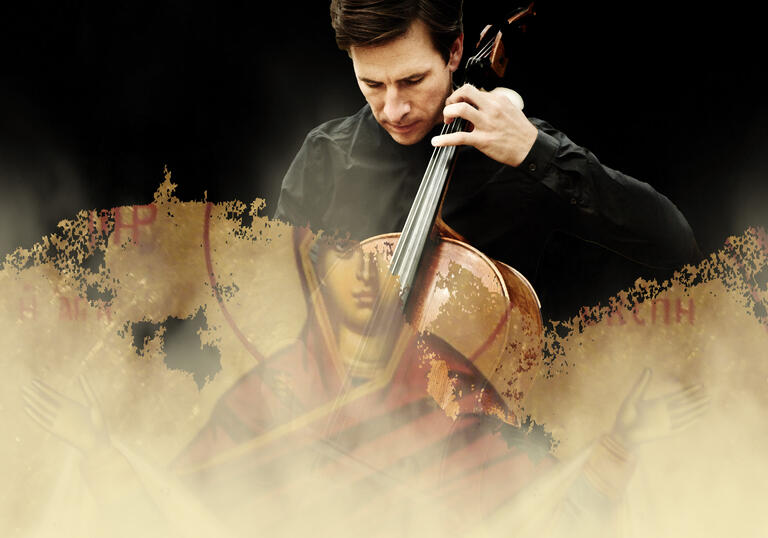Ludwig van Beethoven’s Grosse Fuge (1826) – heard tonight in the arrangement for string orchestra by Austrian conductor and musicologist Felix Weingartner in 1906 – started life as the finale to his String Quartet in B-flat, Op 130. Even at its very first performance, by his friends in the Schuppanzigh Quartet, Beethoven was so apprehensive about reactions that he went to the pub rather than sit in the audience, asking one of the players to report back how the quartet had gone down. The feedback was positive: the small, private audience had enjoyed it, and had asked for two of the quartet’s middle movements to be repeated. Beethoven’s reaction was furious: 'And why didn't they encore the Fugue? That alone should have been repeated! Cattle! Asses!'
Those early listeners weren’t alone in their cool reactions. The following year, a critic for the Allgemeine musikalische Zeitung described the Grosse Fuge as 'incomprehensible, like Chinese'. Beethoven’s publisher, concerned about the commercial wisdom of closing a string quartet with such an intellectually challenging movement, suggested that the composer might write an alternative finale. Beethoven obliged, and excised the Grosse Fuge as a stand-alone work, Op 133.
But despite its reputation for thorny complexity, the Grosse Fuge’s cerebral rigour and serious-minded complexities only serve to highlight the depth and intensity of its expression. The piece is so ambitious that it even begins with its own Overture, in which we get to hear Beethoven’s jagged, uncompromising theme in four different contexts, before the main fugue begins in earnest. Beethoven divides the main body of the piece into two large sections, separated by a more soothing, lyrical episode, which he returns to at the very end of the piece – as if to bring us back from the brink.
Though his Divertimento (1939) is shot through with themes and ideas from his beloved Hungarian folk music, Béla Bartók was actually in Switzerland when he wrote it. He’d been invited to the mountain chalet of Swiss conductor and impresario Paul Sacher, who had previously commissioned Bartók’s denser, thornier Music for Strings, Percussion and Celesta, and asked for some lighter fare this time round. The composer was delighted to oblige, all the more so when Sacher offered him use of his mountain retreat, complete with specially shipped-in piano and on-site personal chef. Remarkably, Bartók completed the piece in just 15 days, between 2 and 17 August 1939. When Sacher called in on him, he found the composer so engrossed in his work and oblivious to the outside world that he had to warn him just how close Europe was to war.
It was indeed a dark time for Bartók to be working on one of his lightest, most immediate pieces. But it’s not all fun and games in the Divertimento. Bartók might consciously look back to the bubbling invention of the Baroque concerto grosso in the witty first movement, as well as indulging his passion for folk music in its stomping rhythms and bluesy accents. The second movement, however, takes a far darker turn: the violins intone what’s barely a melody, only for it to grow via a lumbering, heavy-footed march to reach a screaming, dissonant climax. Just as well, then, that the good-humoured finale dashes on stage with exuberant energy, even if Bartók puts its folksy violin tune through all manner of upside-down, back-to-front contrapuntal trickery before the movement hurries to its joyful close.
Born in Wembley in 1944, John Tavener first made his name in the late 1960s with freewheeling, experimental works that brilliantly captured the spirit of the times, most memorably his fantastical, theatrical 1966 cantata The Whale. Things changed dramatically in 1977, however, when the composer converted to the Eastern Orthodox Church, and devoted much of his music to exploring its spiritual teachings and often mystical themes. The Protecting Veil is a case in point. Written for solo cello and large string orchestra, it was premiered by Steven Isserlis, conductor Oliver Knussen and the BBC Symphony Orchestra at the BBC Proms in September 1989. The piece is deeply inspired by Tavener’s Orthodox faith, in particular the Orthodox Feast of the Protecting Veil of the Mother of God, observed on 1 October. This commemorates a vision of the Virgin Mary at the Church in Vlaherna, Constantinople, in the early tenth century, during a time when Greek Christians were under threat from Saracen invasion. Surrounded by a host of saints, Mary is said to have spread her veil as a protective shelter to cover the Christian believers, inspiring the Greeks to drive away the Saracen army.
The solo cello line in The Protecting Veil, Tavener explained, symbolises Mary: 'I have tried to capture some of the almost cosmic power of the Mother of God. She is represented by the cello and never stops singing; the accompanying string music is an extension of her unending song.'
There are eight sections that run together without a break, returning again and again to the same palette of musical material, as if contemplating it from different angles: Tavener even described the piece as 'a lyrical ikon in sound'. The piece begins high in the solo cello’s range, in a quietly ecstatic introduction that sets the piece’s meditative mood, and the same music returns to close the work, now joyful and outspoken.
© David Kettle

